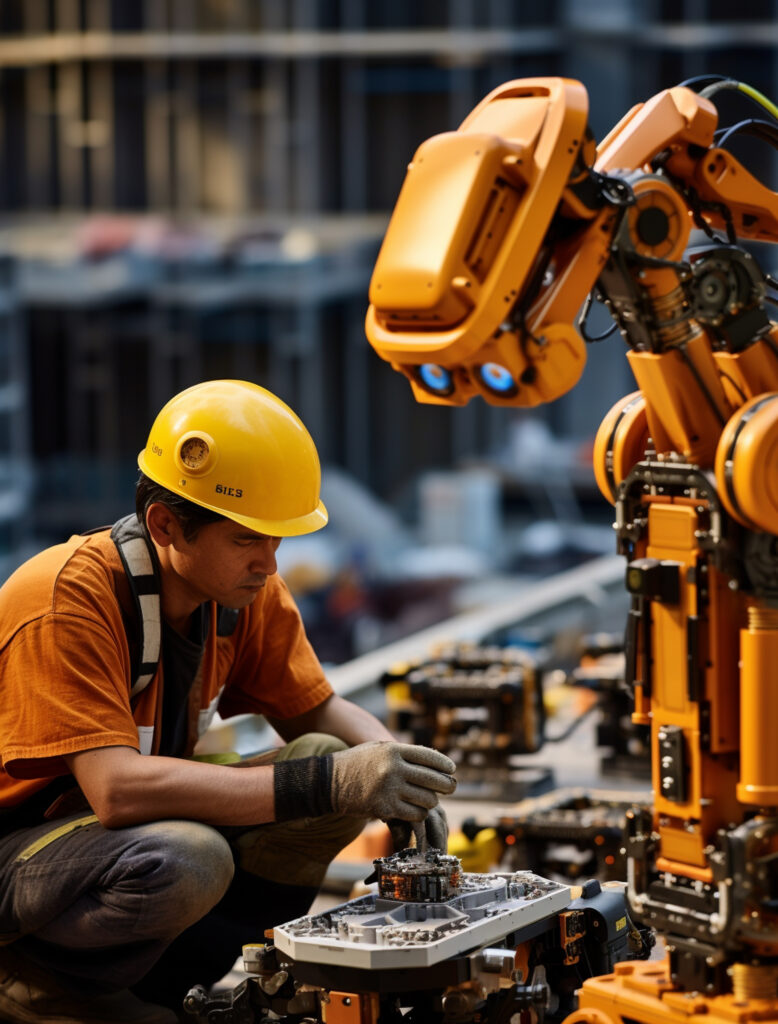The Evolution of Gear Technology: Transforming IA
Revolutionizing Industrial Automation with Advanced Gear Technology Gear technology has evolved into a cornerstone of industrial automation, enabling higher efficiency and precision in industries like robotics, automotive, and energy. This article delves into the history, advancements, and future trends of gear technology, which continue to revolutionize automated systems. Early Gears in Ancient Civilizations The concept […]

Revolutionizing Industrial Automation with Advanced Gear Technology
Gear technology has evolved into a cornerstone of industrial automation, enabling higher efficiency and precision in industries like robotics, automotive, and energy. This article delves into the history, advancements, and future trends of gear technology, which continue to revolutionize automated systems.
Early Gears in Ancient Civilizations
The concept of gears can be traced back to ancient civilizations, where rudimentary gear systems were used in windmills and watermills. These early applications marked the first steps in mechanical automation, providing essential mechanisms for energy transmission.
The Industrial Revolution’s Impact on Gear Technology
The Industrial Revolution brought a dramatic shift in gear technology. The development of metal gears replaced wooden ones, enabling machines to work with higher precision and durability. This shift revolutionized manufacturing processes, helping industries scale production like never before.
20th Century Innovations in Gear Technology
The 20th century saw the emergence of CNC machining and CAD technologies, revolutionizing gear manufacturing by allowing for mass production and high precision. These innovations became the backbone of automated systems in industries like automotive and aerospace.
Modern Gear Technology in Automation
Role of Gears in Today’s Industries
In the modern world, gears are essential components in machinery across a wide array of sectors, including robotics, automotive, and energy. The demand for greater torque, reduced friction, and quieter operation has pushed the adoption of advanced materials and designs.
Key Innovations in Gear Technology
-
Advanced Materials: Lightweight alloys and composites have replaced traditional materials, improving efficiency and durability.
-
3D Printing: Additive manufacturing enables the creation of complex gear designs, opening new possibilities in medical devices and aerospace.
-
Micro Gears: Tiny precision-made gears are essential in applications like drones and compact medical technologies
-
The Role of Gear Technology in Robotics
Importance of Gears in Robotic Joints
Gears play a crucial role in robotic systems, particularly in controlling movement and torque. They provide the precision and flexibility necessary for tasks like welding, material handling, and assembly.
Gears in Collaborative Robots (Cobots)

Collaborative robots, or cobots, depend heavily on sophisticated gear systems for smooth and accurate movements. Their gear systems allow for frequent start-stop motions with minimal backlash, making them ideal for precision tasks alongside human workers.
Image Courtesy: Freepik
Gear Manufacturing: From Traditional to Smart Factories
CNC Machining in Gear Manufacturing
CNC machining remains a dominant method in gear manufacturing due to its precision and repeatability. It allows for efficient cutting and shaping of gears with tight tolerances.
Additive Manufacturing and 3D Printing
3D printing has revolutionized gear production, allowing for intricate geometries that improve performance. This method is particularly useful in industries like aerospace, where strength and weight are critical.
Smart Factories and Industry 4.0
The advent of Industry 4.0 has brought real-time data collection and automated quality control to gear manufacturing. Smart factories can optimize production while minimizing waste, resulting in more efficient processes and higher-quality gear systems.
Sustainability in Gear Technology
Energy-Efficient Gear Systems
Modern gear designs are more energy-efficient, reducing power loss during operation. High-efficiency gearboxes are essential in industries like wind energy and electric vehicles, which emphasize sustainability.
Eco-Friendly Manufacturing Practices
Gear manufacturers are increasingly adopting circular economy practices, refurbishing used gears to extend their lifecycle and reduce waste. The integration of eco-friendly materials and processes is becoming a core focus of the industry
Future Trends in Gear Technology
AI-Powered Gear Systems
Artificial intelligence is beginning to play a role in gear technology, with AI-powered systems enabling real-time performance feedback and predictive maintenance. These systems can detect wear early, extending the operational life of gears and preventing costly breakdowns.
Lightweight and High-Strength Materials
The use of materials such as carbon composites and ceramics is on the rise in gear manufacturing. These materials offer the perfect balance between strength and weight, leading to more compact and efficient systems, particularly in industries such as automotive and aerospace.
Gear technology has evolved significantly from its ancient roots, becoming an integral part of industrial automation. As advancements in AI, materials science, and smart manufacturing continue, gears will remain at the forefront of innovation. Companies looking to stay competitive must embrace these emerging trends to ensure the efficiency, reliability, and sustainability of their automated systems.

